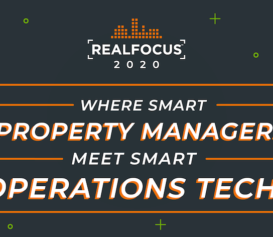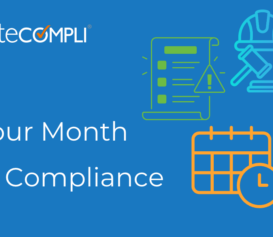The Department of Buildings released an update, and the Local Law 97 rules are finalized. Specifically, three final rules were released after being proposed in early Fall 2023. Here’s what’s changed from proposal to adoption, and where you can get help for carrying out your Local Law 97 plan.
As an aside – some of these rules can get very, very technical – especially the calculation of emission levels. We’re going to cover basic things you need to know: adjustments from the proposed rules, DOB acknowledgements of specific comments, etc. We highly recommend connecting with an environmental expert to walk you through what’s required for your specific building, and how you can manage the first year of compliance.
Linked here is our latest webinar with expert team Cadence OneFive going over the proposed rules. You can connect directly with their team if you have specific questions here.
Article 320 Penalty Framework
Article 320 of Chapter 3 of Title 28 of the NYC Admin Code is the rule that requires annual greenhouse gas emissions limits. The recently finalized rule establishes a penalty framework for failure to comply, specific credits for beneficial electrification, and establishes the emission factor for certain natural gas fuel cells.
The General Rule
Article 320 references the basic tenet of Local Law 97 of 2019:
The law establishes annual GHG emissions limits for each type of building and requires the owners of such buildings to report the building’s actual GHG emissions to the Department each year for the preceding calendar year beginning on May 1, 2025
Specifically, Article 320 establishes what “good faith efforts” means when attempting to comply with Local Law 97 for the initial compliance period: 2024 – 2029. As a reminder, emissions limits will be reduced in 2030 (putting more properties in danger of being noncompliant), and enforcement will ramp up alongside that change. The department underlines this in their summary:
While this rule defines “good faith efforts” for the purposes of the 2024-2029 compliance period, future rulemaking will lay out a definition of “good faith efforts” for subsequent periods that will be different. In general, compliance with Local Law 97 requires multiple years of planning and implementation, which means that any good faith effort to comply with the 2030-2034 emissions limits will require owners to take steps to comply with such limit well in advance of 2030. This also applies to the many buildings that are estimated today to be in compliance with the 2024 – 2029 emissions limit, but with current energy patterns will fall out of compliance with the more stringent limits in 2030.
For these next few years, good faith effort revolves around a decarbonization plan setting a path for compliance – with specific requirements. Per the summary of the final rule, “owners who have received approval from the Department for the work necessary to comply with the emissions limit and owners that demonstrate that the building is undergoing work to achieve electric readiness are eligible for a mitigated penalty.”
Specific requirements can be seen in full in the proposed rule linked here.
Changes From The Proposed Rule
Per the Department, here’s what changed from the proposed rule:
- Clarifies Energy Star Portfolio Manager (ESPM) property types to include successor names of property types listed in the rule and prohibits the use of certain ESPM property
types; - Clarifies that one method must be applied for calculating building emissions;
- Requires that distributed energy resources be submetered;
- Establishes a coefficient for natural gas fuel cells in operation prior to January 19, 2023; and
- Updates the title of certain equations in the rule to keep such equations sequential.
Additionally, here are the changes to the rule influenced by comments during the public comment period:
- Clarifies technical standards in definitions for “Energy Audit” and “Gross Floor Area”;
- Clarifies the first report for covered buildings subject to section 28-320.3.9 of the Administrative Code is due May 1, 2036;
- For the Beneficial Electrification credit, removes limitation that qualifying equipment be installed no earlier than January 1, 2021, and requires owner to maintain monthly energy usage documentation;
- Requires that a decarbonization plan submitted to demonstrate good faith efforts be certified by a registered design professional, clarifies that the energy audit may be no older than four years, and clarifies that the plan must demonstrate how the building will achieve compliance with the applicable emissions limit for each compliance period; and
- Clarifies that a building owner can demonstrate good faith efforts by having work underway even if such work does not require an application with the Department, by providing a signed contract with a service provider and proof of payment.
DOB Acknowledgements
The DOB noted a number of specific acknowledgements from comments in the final summary:
- Penalty assessment from DOB vs. OATH: Comments were made asking about the DOB’s jurisdiction to issue penalties typically imposed by OATH. In response, DOB states that “DOB recognizes that OATH as the adjudicating body has the ultimate responsibility with respect to the amount of the penalty to be imposed and may impose penalties that vary from the amounts recommended by DOB.”
- Ability to enter into mediated solutions: DOB noted that their authority includes “alternatives to the issuance of process for the commencement of enforcement proceedings, such as corrective action plans.”
- The revised rule did not:
- remove the good faith effort pathway
- further restrict the use of Renewable Energy Credits
- extend the deadlines for compliance
Article 321 Compliance
The General Rule
Article 321 references the “prescriptive list” path – properties that can comply by following a set of specific requirements. It also addresses penalties for failure to comply. The Department has helpful resources for this compliance path here, including the kinds of properties covered under this rule. If you have any questions, you can also reach out to GHGEmissions@buildings.nyc.gov for help.
As a reminder, here’s what’s needed to comply for prescriptive-list eligible properties – no later than December 31, 2024:
- Adjusting temperature set points for heat and hot water to reflect appropriate space occupancy and facility requirements.
- Repairing all heating system leaks.
- Maintaining the building’s heating system, including but not limited to ensuring that system component parts are clean and in good operating condition.
- Installing individual temperature controls or insulated radiator enclosures with temperature controls on all radiators.
- Insulating all pipes for heating and/or hot water.
- Insulating the steam system condensate tank or water tank.
- Installing indoor and outdoor heating system sensors and boiler controls to allow for proper set-points.
- Replacing or repairing all steam traps such that all are in working order.
- Installing or upgrading steam system master venting at the ends of mains, large horizontal pipes, and tops of risers, vertical pipes branching off a main.
- Upgrading lighting to comply with the standards for new systems set forth in section 805 of the New York city energy conservation code and/or applicable standards referenced in such energy code on or prior to December 31, 2024.
- Weatherizing and air sealing where appropriate, including windows and ductwork, with focus on whole-building insulation.
- Installing timers on exhaust fans.
- Installing radiant barriers behind all radiators.
Penalties for failing to file the report and demonstrate compliance in these cases are $10,000.
You can view the final rule here.
Changes From The Proposed Rule
Here are specific changes based on the comment period:
- Clarifies multiple buildings on the same tax lot that are reporting pursuant to the same section of the law can comply by submitting a single report;
- Clarifies temperature controls or enclosures for radiators are only required on two-pipe steam distribution systems, in response to feedback from the engineering community that TRVs have minimal efficacy in one-pipe steam buildings.
Local Law 88 Lighting & Submetering
The General Rule
From the summary directly:
Local Law No. 88 of 2009 (“Local Law No. 88” or the “Law”) was enacted on December 28, 2009, to require buildings greater than 50,000 square feet to upgrade lighting systems and install electrical sub-meters in tenant spaces by January 1, 2025, to promote energy efficiency in buildings. The law was subsequently amended to include buildings that are 25,000 square feet and larger.
Per the code, covered tenant spaces are defined as:
COVERED TENANT SPACE. (i) A tenant space larger than 5,000 gross square feet (465 m2) on one or more floors of a covered building let or sublet to the same person, or (ii) a floor, of a covered building, larger than 5,000 gross square feet (465 m2) consisting of tenant spaces let or sublet to two or more different persons.
Exception: The term “covered tenant space” shall not include dwelling units classified in occupancy group R-2 or R-3.
This final rule specifically addresses how to report on compliance for lighting upgrades and sub-meter installation in tenant spaces, and penalties for failing to report the same. Reporting is due no later than May 1, 2025 with a professional attestation regarding implementation/inspection for compliance. Penalties for failure to submit a report will be $1,500, issued annually until filed. Penalties for failure to install sub-meters in covered tenant spaces will be $500 for each space, assessed annually until all sub-meters are installed.
You can view the final rule here. No specific changes from the proposed rule have been addressed or outlined.
May 1st, 2025 may seem far out, but reports submitted by that date will be based on data collected & emissions during the 2024 calendar year. If you don’t have plans in place for Local Law 97, we’re happy to connect you with an expert that can help you understand your options and take action ASAP.




